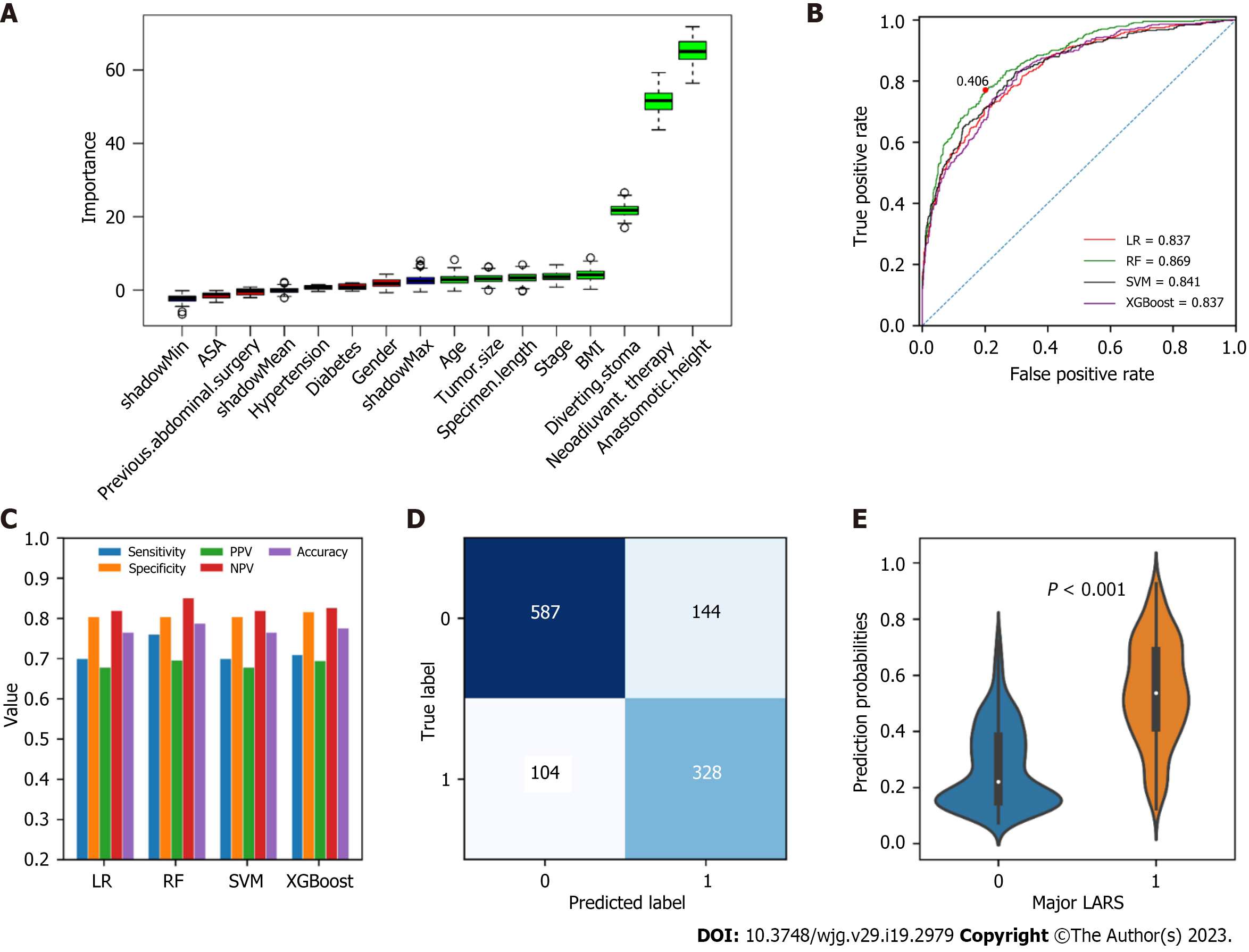Copyright
©The Author(s) 2023.
World J Gastroenterol. May 21, 2023; 29(19): 2979-2991
Published online May 21, 2023. doi: 10.3748/wjg.v29.i19.2979
Published online May 21, 2023. doi: 10.3748/wjg.v29.i19.2979
Figure 2 Variable selection using the Boruta algorithm and overview of development of the models in the training set.
A: The importance of all variables. The red boxes indicated the variables weakly relevant to major low anterior resection syndrome (LARS). The blue boxes were random variables automatically generated by the algorithm and were not included in the analysis. The green boxes indicated the variables strongly relevant to major LARS; B: Receiver operating characteristic curves of the four machine learning models in the training set. The red dot denotes the optimal Youden index for the random forest (RF) model; C: Performance measurements of the four machine learning models illustrated by sensitivity, specificity, positive predictive value, negative predictive value and accuracy; D: Confusion matrix of the optimization RF model; E: Comparison of predicted probabilities calculated by the RF model in patients with and without major LARS in the training set. ASA: American Society of Anesthesiologists classification; BMI: Body mass index; LR: Logistic regression; LARS: Low anterior resection syndrome; RF: Random forest; SVM: Support vector machine; XGBoost: Extreme gradient boosting; PPV: Positive predictive value; NPV: Negative predictive value.
- Citation: Wang Z, Shao SL, Liu L, Lu QY, Mu L, Qin JC. Machine learning model for prediction of low anterior resection syndrome following laparoscopic anterior resection of rectal cancer: A multicenter study. World J Gastroenterol 2023; 29(19): 2979-2991
- URL: https://www.wjgnet.com/1007-9327/full/v29/i19/2979.htm
- DOI: https://dx.doi.org/10.3748/wjg.v29.i19.2979









